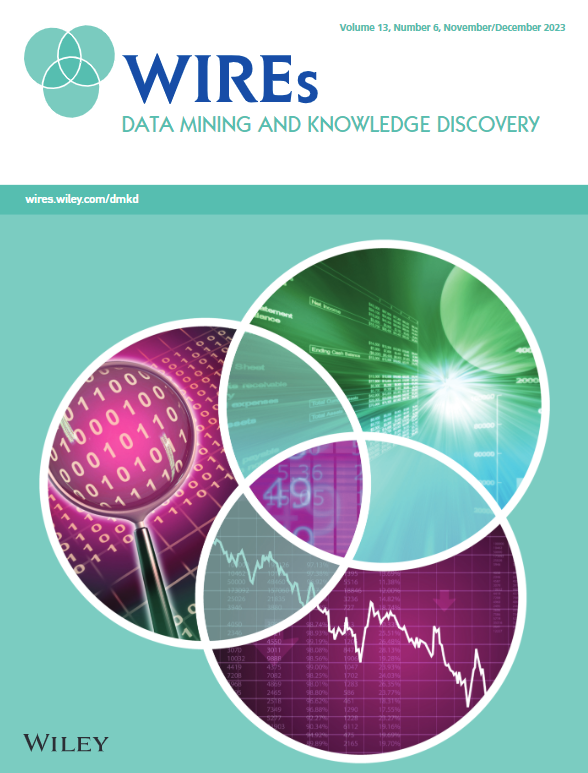Deepfake attribution: On the source identification of artificially generated images
IF 11.7
2区 计算机科学
Q1 COMPUTER SCIENCE, ARTIFICIAL INTELLIGENCE
Wiley Interdisciplinary Reviews-Data Mining and Knowledge Discovery
Pub Date : 2021-12-03
DOI:10.1002/widm.1438
引用次数: 5
Abstract
Synthetic media or "deepfakes" are making great advances in visual quality, diversity, and verisimilitude, empowered by large‐scale publicly accessible datasets and rapid technical progress in deep generative modeling. Heralding a paradigm shift in how online content is trusted, researchers in digital image forensics have responded with different proposals to reliably detect AI‐generated images in the wild. However, binary classification of image authenticity is insufficient to regulate the ethical usage of deepfake technology as new applications are developed. This article provides an overview of the major innovations in synthetic forgery detection as of 2020, while highlighting the recent shift in research towards ways to attribute AI‐generated images to their generative sources with evidence. We define the various categories of deepfakes in existence, the subtle processing traces and fingerprints that distinguish AI‐generated images from reality and each other, and the different degrees of attribution possible with current understanding of generative algorithms. Additionally, we describe the limitations of synthetic image recognition methods in practice, the counter‐forensic attacks devised to exploit these limitations, and directions for new research to assure the long‐term relevance of deepfake forensics. Reliable, explainable, and generalizable attribution methods would hold malicious users accountable for AI‐enabled disinformation, grant plausible deniability to appropriate users, and facilitate intellectual property protection of deepfake technology.Deepfake归因:关于人工生成图像的来源识别
由于大规模公开访问的数据集和深度生成建模的快速技术进步,合成媒体或“深度伪造”在视觉质量、多样性和真实感方面取得了巨大进步。数字图像取证的研究人员提出了不同的建议,以可靠地检测人工智能生成的图像,这预示着在线内容如何被信任的范式转变。然而,随着新应用的发展,图像真实性的二元分类不足以规范深度伪造技术的伦理使用。本文概述了截至2020年合成伪造检测的主要创新,同时强调了最近研究转向将人工智能生成的图像归因于其有证据的生成源的方法。我们定义了存在的各种类型的深度伪造,区分人工智能生成的图像与现实和彼此的微妙处理痕迹和指纹,以及当前对生成算法的理解可能的不同程度的归因。此外,我们还描述了合成图像识别方法在实践中的局限性,利用这些局限性设计的反取证攻击,以及新研究的方向,以确保深度伪造取证的长期相关性。可靠的、可解释的和可推广的归因方法将使恶意用户对人工智能支持的虚假信息负责,为适当的用户提供合理的推诿责任,并促进深度假冒技术的知识产权保护。
本文章由计算机程序翻译,如有差异,请以英文原文为准。
求助全文
约1分钟内获得全文
求助全文
来源期刊

Wiley Interdisciplinary Reviews-Data Mining and Knowledge Discovery
COMPUTER SCIENCE, ARTIFICIAL INTELLIGENCE-COMPUTER SCIENCE, THEORY & METHODS
CiteScore
22.70
自引率
2.60%
发文量
39
审稿时长
>12 weeks
期刊介绍:
The goals of Wiley Interdisciplinary Reviews-Data Mining and Knowledge Discovery (WIREs DMKD) are multifaceted. Firstly, the journal aims to provide a comprehensive overview of the current state of data mining and knowledge discovery by featuring ongoing reviews authored by leading researchers. Secondly, it seeks to highlight the interdisciplinary nature of the field by presenting articles from diverse perspectives, covering various application areas such as technology, business, healthcare, education, government, society, and culture. Thirdly, WIREs DMKD endeavors to keep pace with the rapid advancements in data mining and knowledge discovery through regular content updates. Lastly, the journal strives to promote active engagement in the field by presenting its accomplishments and challenges in an accessible manner to a broad audience. The content of WIREs DMKD is intended to benefit upper-level undergraduate and postgraduate students, teaching and research professors in academic programs, as well as scientists and research managers in industry.
 求助内容:
求助内容: 应助结果提醒方式:
应助结果提醒方式:


